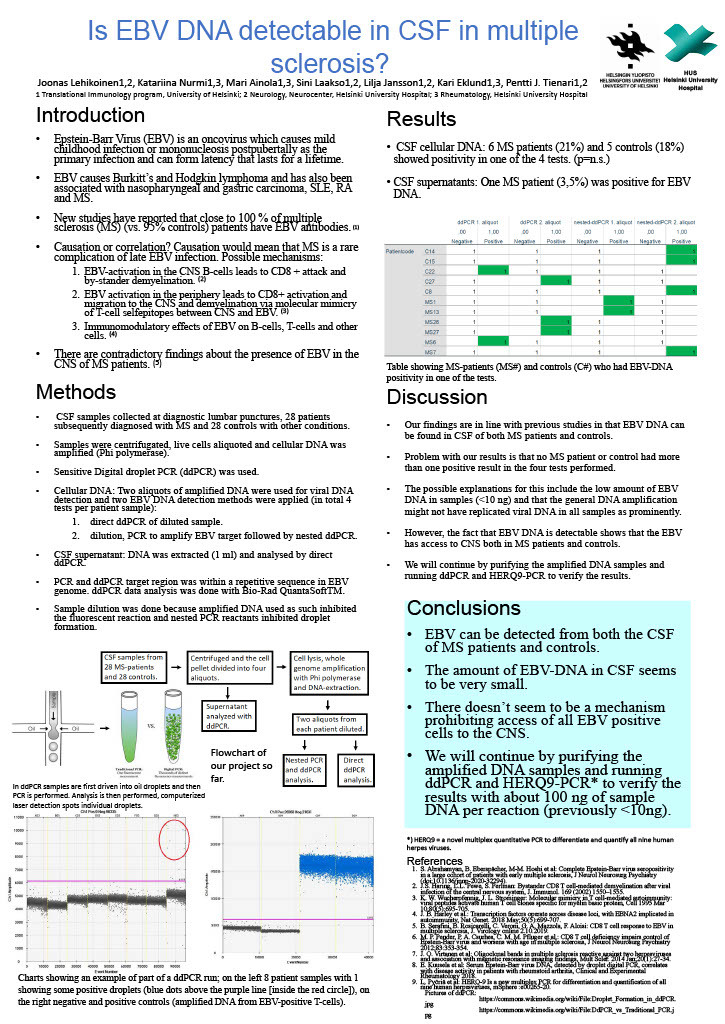Is EBV DNA detectable in CSF in multiple sclerosis?
Abstract
Background:
EBV is the outstanding risk factor for multiple sclerosis (MS). However, there are contradictory findings on the viral presence in the CNS in MS.
Aims:
To test the presence of EBV DNA in cerebrospinal fluid (CSF) of MS patients and controls.
Methods:
CSF samples were collected at diagnostic lumbar punctures from 28 patients subsequently diagnosed with MS and 28 controls with other conditions. CSF supernatants and cells were separated by centrifugation, live cells were aliquoted and cellular DNA amplified by Phi polymerase. Digital droplet PCR (ddPCR), a sensitive method to detect very low amounts, even single copies of viral DNA, was used. Two aliquots of amplified DNA were used for viral DNA detection and two EBV DNA detection methods were applied (in total 4 tests per patient sample): 1. direct ddPCR of diluted sample, 2. dilution, PCR to amplify EBV target followed by nested ddPCR. DNA was extracted from CSF supernatants (1 ml) and analysed only by direct ddPCR. PCR and ddPCR target region was within a repetitive sequence in EBV genome. ddPCR data analysis was done with Bio-Rad QuantaSoftTM.
Results:
One of MS patients’ CSF supernatants was positive for EBV DNA, 2 other patient samples and 3 controls were possibly positive. Analysing CSF cellular DNA, 6 MS patients (21%) and 5 controls (18%) showed positivity in one of the 4 tests.
Conclusion:
These preliminary results suggest that EBV-DNA is detectable in some of the CSF cells of both MS patients and controls but the proportion of EBV positive cells is probably very small, since not all aliquots of a donor were positive using this sensitive assay. This study is in line with previous studies in that there does not seem to be a mechanism prohibiting access of all EBV-positive cells to the CNS in either MS or controls.

